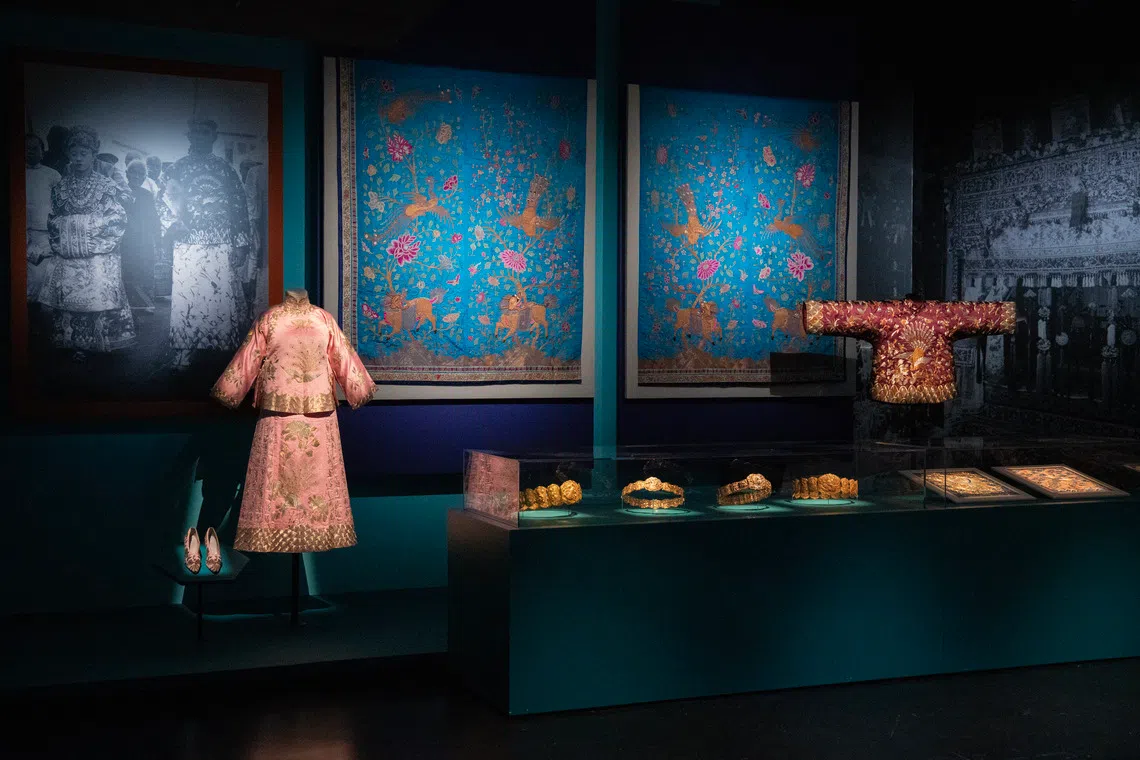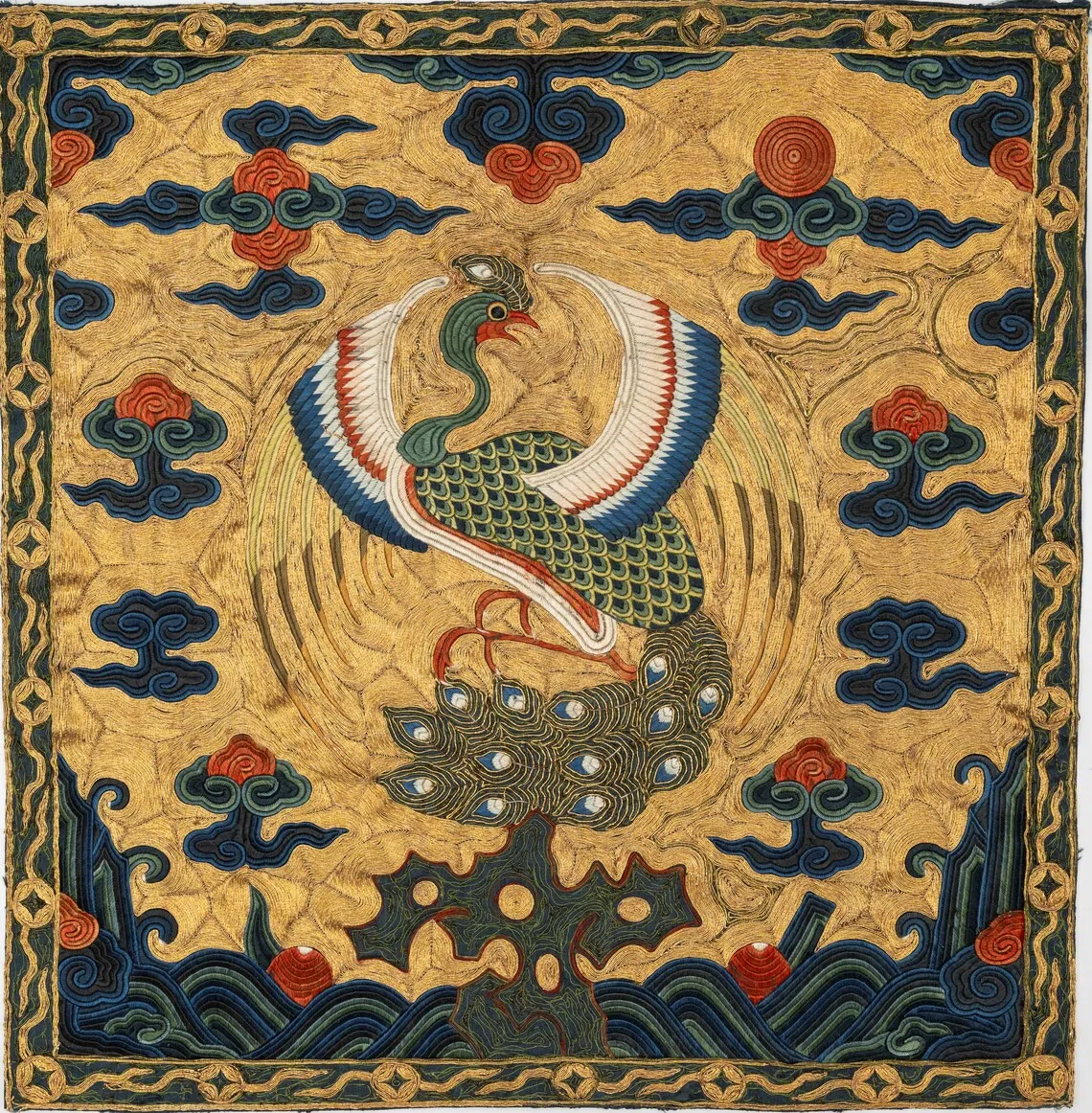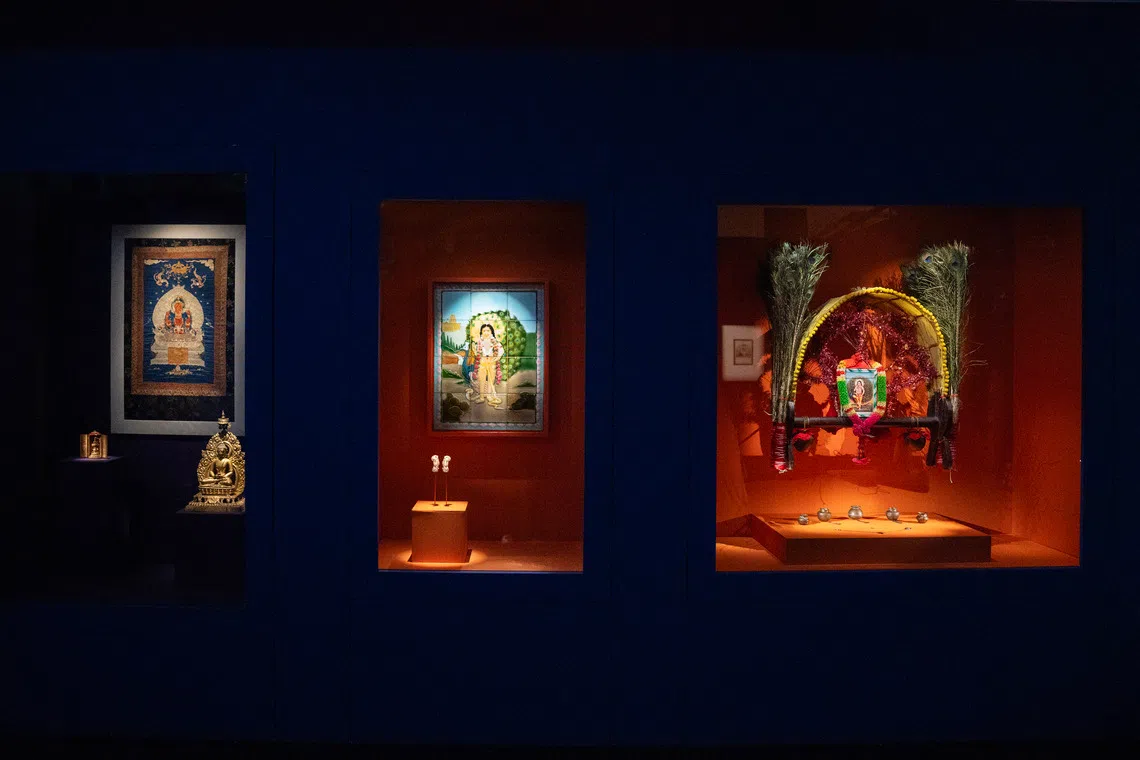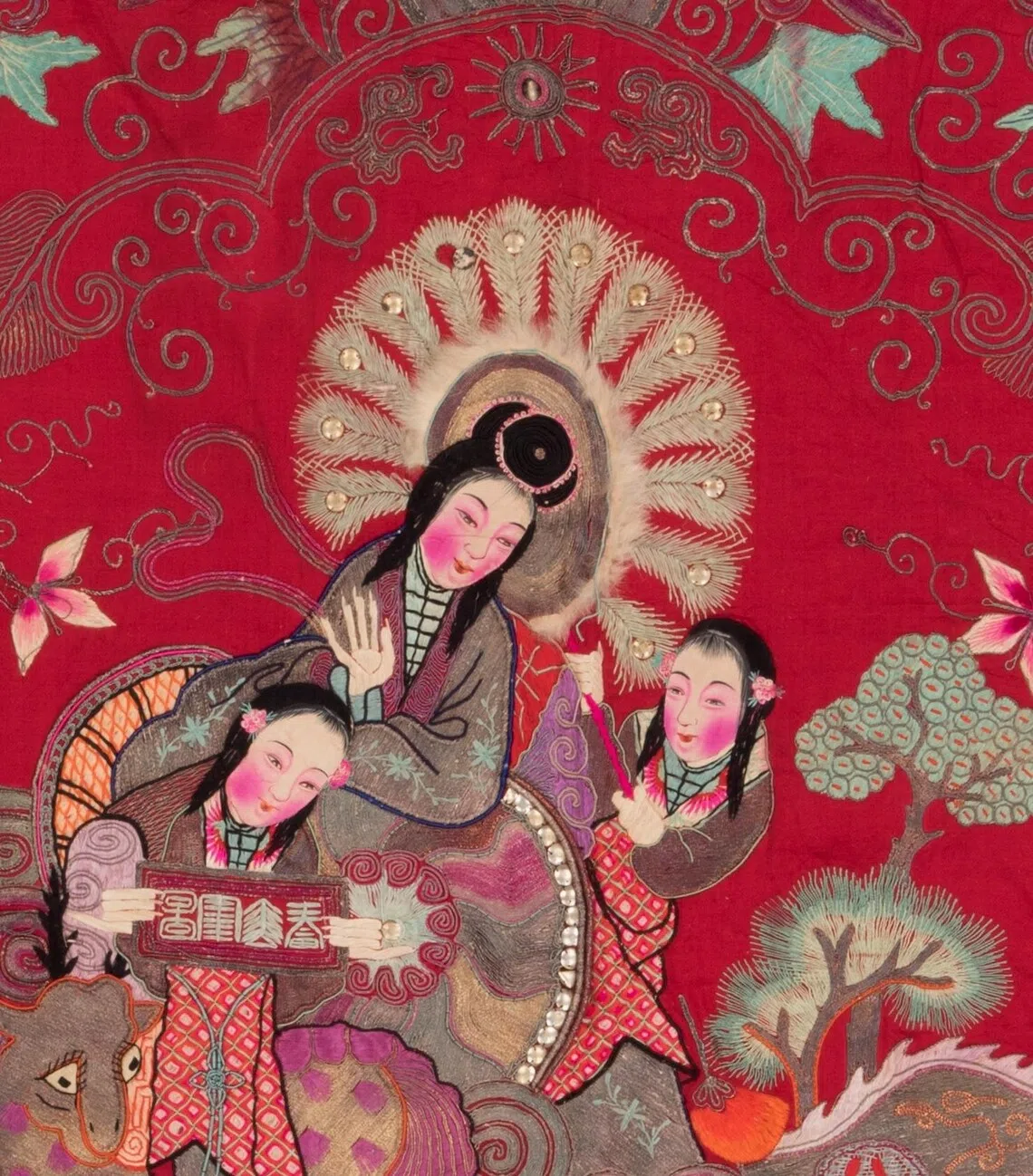Peranakan Museum exhibition explores the peacock as status, religious, environmental symbol
Sign up now: Get ST's newsletters delivered to your inbox

Peranakan items featuring the peacock as a symbol of luxury and status are on display at the exhibition Peacock Power: Beauty And Symbolism Across Cultures.
PHOTO: PERANAKAN MUSEUM
Follow topic:
SINGAPORE – The peacock, a quintessentially Asian bird, gets its day in the sun in a new exhibition at the Peranakan Museum, a showcase of how the vainglorious creature has strutted its way into countless objects.
Peacock Power: Beauty And Symbolism Across Cultures features more than 100 items drawn from the National Collection and on loan from Peranakan, Chinese, Malay and Indian households.
Like the fowls themselves, this two-storey exhibition comes with a self-consciously showy element. The eye is led from gold belts inlaid with diamonds to a gold-threaded silk banner to a feathery kavadi, a canopy borne by Hindu devotees during Thaipusam.
This material shimmer is finished off with an immersive holographic experience of aloof peacocks with their families of peahen and peafowl. Stand in the right spot, and the males fan their trains to perform for the visitor a mesmerising and rhythmic courtship dance – an unexpectedly satisfying pleasure.
At the media preview on Oct 21, the exhibition’s curatorial adviser Peter Lee says the “incredible sense of wonder” people experience when they encounter a peacock in all its glory is why the bird has been chosen as the subject of the showcase.
“There’s no animal in the natural world that is more resonant for all of us. When the peacock’s fantail opens, whatever community we come from, it resonates in the same way, so it’s really about shared heritage, shared memory,” says Mr Lee.
The beautiful items on display also show how the bird has captured the imagination of craftsmen and artists, no matter their community, and the trade links that led to the motif’s circulation.
Mr Lee, a Peranakan scholar who authored a chapter on ethnicity and identities in a rapidly transforming world in the forthcoming publication, New Cambridge History Of South-east Asia, says: “The Peranakans were avid early global shoppers, so their things were made by Indian, Malay, Japanese and Chinese craftsmen. It’s really about a community that was global before anyone else.”
Several items were not yet up during the exhibition preview, but those that were ready spoke volumes of the care with which these birds were integrated into designs and imbued with luxury.
One highlight is a heavyset gold belt from early 20th-century Jakarta or Singapore, used to fasten a sarong or kain panjang, or long cloth, worn by a Peranakan woman.
Almost 80 carats of diamonds were set with the azuring technique by Sinhalese workmen, where the back of the belt was cut to allow light to pass through, so the gems sparkle. These were placed directly onto the body of a peacock and its train that form the buckle showpiece.
Curator Diane Chee says this would have been part of a bridal trousseau.
Next to it are influences from another direction: peacock rank badges made of silk, gold threads and peacock feathers.
These were worn by wealthy Chinese merchants in southern China and South-east Asia, mimicking those in Ming and Qing courts, to associate themselves with the refinement of their “motherland”.

A peacock rank badge made of silk, gold threads and actual peacock feathers.
PHOTO: PERANAKAN MUSEUM
But wearing the proud birds is not all about status. It is about sanctification and auspiciousness, too, as their widespread use in religious accessories shows.

The peacock in religion, spanning Buddhism, Hinduism and Christianity.
PHOTO: PERANAKAN MUSEUM
Mr Jegateesh Gynasigamani, an assistant curator brought in from the Indian Heritage Centre, says peacock feathers were used to fan deities in Hindu homes and temples.
In the exhibition, peacocks are depicted roosting or perching on a Christian praying table, where they are associated with immortality; as the mount of Hindu god Lord Murugan; and decorating Mahayana Buddhist artefacts.

A birthday hanging featuring Taoist goddess Magu.
PHOTO: PERANAKAN MUSEUM
Their feathers form the halo of Taoist goddess Magu on a “birthday hanging”, a mid-20th-century birthday decoration from China that also features winged cherubs. It is a cosmopolitan composition that plays up the curators’ thesis of the peacock as a “universal symbol”.
Mr Gynasigamani points to an obvious reason for the peacocks’ religious utility that is often overlooked. “They are considered auspicious because of the eyelets on their train. These are believed to ward off the evil eye,” he says.
There is more environmental resonance to the peacock today that the exhibition tackles – with the green peafowl, indigenous to South-east Asia, listed as endangered.
This status has led to strict regulations on the import and export of peacock feathers that has affected at least one major artefact of the show: a Singo Barong mask. It is used in the Reog Ponorogo dance from East Java, Indonesia, featuring the face of a lion that is usually made from tiger skin and adorned with a fan of peacock feathers.
So, while thousands of peacock feathers are being cleared at the borders, visitors can appreciate the mask – typically weighing 25kg to 40kg – with a digital reproduction of the peacock crown. The museum expects the feathers to be approved by early 2026.
Responding to the peacock’s dual position as natural wonder and cultural symbol, artist Ernest Goh has a commissioned work, titled Thousand Eyes. His collage, made of laser-etched photographs of bodhi leaves, is juxtaposed with a neighbouring light box containing the actual leaves, yellowing and wilting as time passes.
He says: “Peacocks are very much part of our culture, but also very much part of our ecosystem. Past exploitation has reduced their numbers. This idea of impermanence through using the leaves was something I wanted to show.”
That will not stop people from elevating the peacock to myth, however. Not satisfied with the exquisite creature they can see, cultures have transformed it into beings like the Chinese phoenix, the Persian simurgh, the Indian Gandaberunda and the Islamic Buraq.
One can only hope there will not come a day when the peacock becomes a mere memory to be retold.
Book It/Peacock Power: Beauty And Symbolism Across Cultures
Where: Special Exhibition Gallery, Peranakan Museum, 39 Armenian Street www.nhb.gov.sg/peranakanmuseum
When: Oct 31, 2025 to Aug 30, 2026; Saturdays to Thursdays (10am to 7pm), Fridays (10am to 9pm)
Admission: $6 for Singaporeans and permanent residents; $18 for foreign residents and tourists
Info:


